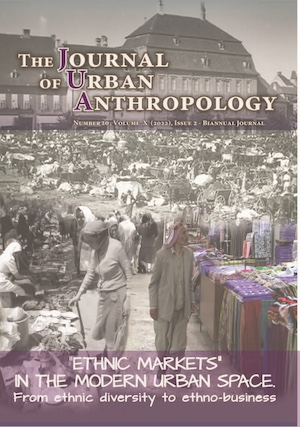Can markets be ethnic? The Ottoman bedestens (fabric bazaars)throughout history
Can markets be ethnic? The Ottoman bedestens (fabric bazaars)throughout history
Author(s): Thede KahlSubject(s): Economic history, Social history, Cultural Anthropology / Ethnology, 13th to 14th Centuries, 15th Century, Ethnic Minorities Studies
Published by: EDITURA OSCAR PRINT
Keywords: Balkans; bazaar; ethnic markets; Ottoman architecture; Janissaries; textile production;
Summary/Abstract: The Ottoman Empire was very heterogeneous in terms of the religious denominations, languages and educational backgrounds of its inhabitants: the coexistence of Muslims, Christians and Jews was conflictual and characterised by oppression by the Muslim ruling class. In trade, however, it became apparent that common economic interests led to mutual dependencies and even well-functioning, multiethnic symbioses. Typical places of such coexistence were the bedestens – Ottoman fabric bazaars, which spread to southeastern Europe as the Ottoman Empire expanded from the 14th century onward. After the fall of the empire, the bedestens were treated very differently in the nation-states. Especially in the Christian-dominated states of southeastern Europe, Ottoman cultural heritage was held in low esteem; many buildings perceived as “Turkish” were left to decay or fell into disrepair. The article describes the multi-ethnic coexistence in bedestens and presents the “nationalisation” and change of use of some of the bedestens preserved today.
Journal: THE JOURNAL OF URBAN ANTHROPOLOGY
- Issue Year: 10/2022
- Issue No: 20
- Page Range: 30-49
- Page Count: 20
- Language: English
- Content File-PDF

